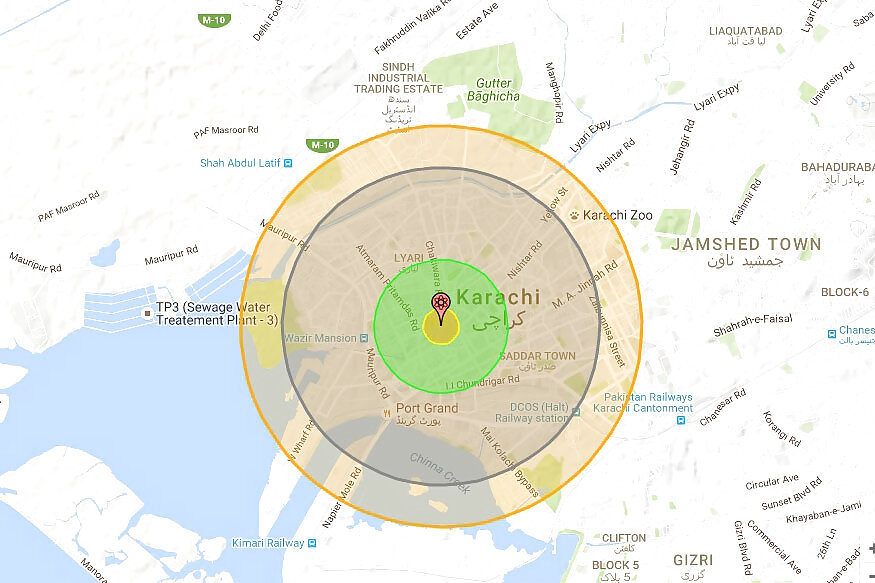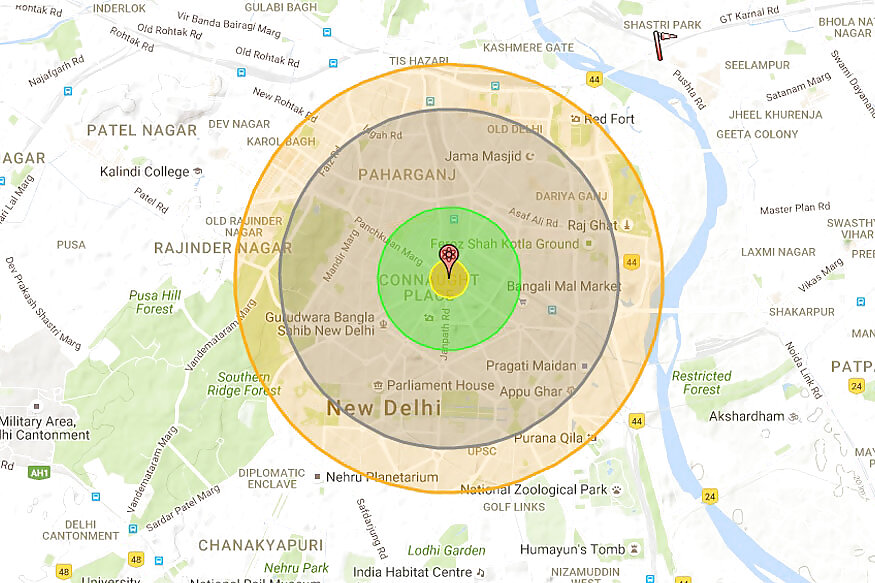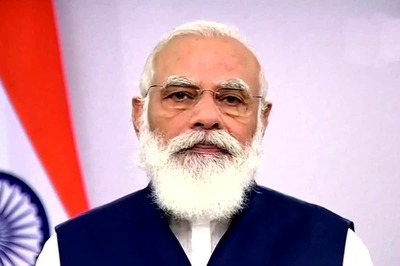
views
Amidst growing tensions between India and Pakistan, of late, citizens from both sides of the Line of Control can be observed taking pride of their respective nuclear arsenal on social media platforms.
With little to zero knowledge, commoners can be easily spotted bragging about the nuclear might of their country on the internet. Also, they mindlessly go ahead in judging which country will even win a nuclear war through their posts, comments and tweets.
So, dear readers (on both sides of the fence), do you have any clue of what will happen if your casual talk on nuclear war becomes a reality?
Of course, you don't have to drop a bomb to calculate this. Alex Wellerstein, a Harvard-educated historian, who specializes on the history of nuclear weapons and government secrecy has a nuclear effects simulator on his website.
The simulator uses the integration of Google Maps and data points collected from thousands of nuclear detonations that have taken place from 1939. The list also includes India's largest Nuclear weapon tested which was a 65 kilo-tons bomb and Pakistan's largest weapons tested at 45 kilotons.

The simulator calculates, that if the ground zero is Sarafa Bazar in Karachi, the estimated fatalities will be in excess of 6,41,620 people. The estimated figures of people injured will be 15,96,830. Though the simulator says that modelling casualties from a nuclear attack is difficult and these numbers should be seen as evocative, not definitive.
The model also calculates the humanitarian impact of a nuclear blast. The "humanitarian impact" model works by using the Google Places API to search out tagged places near the ground zero location. This is the same algorithm Google Maps uses, whenever you ask how many restaurants are near where you happen to be.
The point of the "humanitarian impact" model is to emphasise some of the collateral impacts of a nuclear explosion, and, to indicate the ways in which support services like hospitals and fire stations would be themselves impacted by a nuclear attack.

Similarly, if Pakistan hits New Delhi with its 45 Kiloton nuclear bomb the impact is even more disastrous as portrayed by the simulator.
6,56,070 people will lose their lives if a Pakistani nuke is detonated at Connaught Place. There will be more than 15,28,490 people who will be injured in this attack. Places like, Jama Masjid, Purana Qila, Parliament house and even Rashtrapati Bhavan will be wiped out.
The simulator also calculates the maximum size of the nuclear fireball after detonation along with radiation radius, air blast radius and thermal radiation radius that cause 3rd-degree burns.
The implications are catastrophic if a nuclear bomb is detonated on either side. So, next time you casually talk about whether India should nuke Pakistan, or vice-versa, just head to this website and you'll be horrified by its implications.
You can also calculate the effects of the blast in your own city on this website. Till now, more than 85.6 million people have detonated a nuclear bomb on this simulator. This is probably the safest and an educative way of detonating a nuclear bomb. Alex Wellerstein the creator of this simulator is an assistant professor of science and technology studies at the Stevens Institute of Technology in New Jersey.
He runs Restricted Data: The Nuclear Secrecy Blog and is the creator of the NUKEMAP nuclear effects simulator


















Comments
0 comment